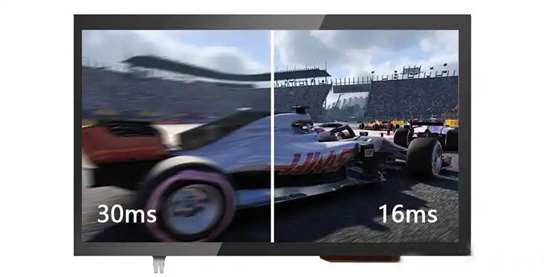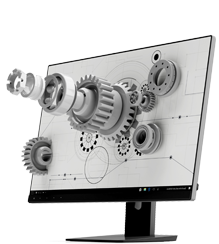The Influence of Response Time of LCD Screen on Dynamic Images

The impact of the response time of LCD screens on dynamic images is mainly reflected in the following as
The impact of the response time of LCD screens on dynamic images is mainly reflected in the following aspects:
1. Definition of Response Time
Response time refers to the speed at which each pixel of a LCD screen responds to input signals, that is, the time required for each pixel to go from dark to light or from light to dark, usually measured in milliseconds (ms). The shorter the response time, the smoother the dynamic image will be, without any lag or dragging sensation.
2. Smoothness of dynamic images
Dragging phenomenon: If the response time is too long and the pixels cannot switch from one state to another in a timely manner, dragging phenomenon will occur. For example, when playing sports events, there may be a blurry trail behind the athlete's fast running figure.
The relationship between frame rate and response time: The shorter the response time, the more frames the screen can display per second, and the smoother the image. For example, a response time of 16 milliseconds can support a display of 63 frames per second, while a response time of 12 milliseconds can support a display of 83 frames per second.
3. Application scenarios
Esports monitor: In esports competitions, players need to react instantly. A short response time LCD screen allows players to see clearer dynamic images without misjudging the enemy's position or movements due to dragging.
Video playback: When playing movies or videos, a long response time can cause flickering and unsmooth visuals, affecting the viewing experience.
4. Measurement of response time
The response time is usually divided into rise time and fall time, and the sum of the two is used to represent the time. At present, there is no recognized standard for calculating grayscale response time, but grayscale response time is more important for dynamic image display in practical applications.
5. Factors affecting response time
LCD viscosity: The higher the viscosity, the slower the response time.
Product box thickness: The smaller the box thickness, the faster the response time.
Drive mode and circuit design: Optimizing circuit layout and signal transmission path, reducing circuit delay
and interference, can improve the response speed of LCD screen.
Temperature: At lower temperatures, the transition rate of liquid crystal molecules slows down, resulting in
a decrease in response speed.
6. Choose an appropriate response time
Normal use: For daily video watching and general gaming, a response time between 16ms and 25ms can already provide a good experience.
Professional applications: For esports displays or high-speed action games, screens with response times below 12ms or even lower (such as 8ms, 4ms) can provide a smoother visual experience.
In summary, the response time of LCD screens has a significant impact on the smoothness of dynamic images. The shorter the response time, the smoother the dynamic image and the less dragging, which can provide a better visual experience.










